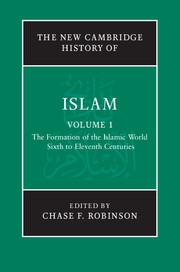Book contents
- Frontmatter
- Introduction
- PART I THE LATE ANTIQUE CONTEXT
- PART II UNIVERSALISM AND IMPERIALISM
- 5 The rise of Islam, 600–705
- 6 The empire in Syria, 705–763
- 7 The empire in Iraq, 763–861
- 8 The waning of empire, 861–945
- 9 The late ʿAbbāsid pattern, 945–1050
- PART III REGIONALISM
- PART IV THE HISTORIOGRAPHY OF EARLY ISLAMIC HISTORY
- Conclusion: From formative Islam to classical Islam
- Glossary
- Bibliography
- Index
- Plate Section
- References
8 - The waning of empire, 861–945
from PART II - UNIVERSALISM AND IMPERIALISM
Published online by Cambridge University Press: 28 March 2011
- Frontmatter
- Introduction
- PART I THE LATE ANTIQUE CONTEXT
- PART II UNIVERSALISM AND IMPERIALISM
- 5 The rise of Islam, 600–705
- 6 The empire in Syria, 705–763
- 7 The empire in Iraq, 763–861
- 8 The waning of empire, 861–945
- 9 The late ʿAbbāsid pattern, 945–1050
- PART III REGIONALISM
- PART IV THE HISTORIOGRAPHY OF EARLY ISLAMIC HISTORY
- Conclusion: From formative Islam to classical Islam
- Glossary
- Bibliography
- Index
- Plate Section
- References
Summary
The assassination of al-Mutawakkil
On a winter night in Sāmarrāʿ in 247/861, the caliph Jaʿfar al-Mutawakkil held a carousing session with some companions and courtiers. The caliph had a fondness for wine, as well as for the foolery of clowns and other entertainments, and we are told that on this occasion, after openly insulting his son and heir apparent, al-Muntaṣir, he proceeded to drink himself into a stupor. By this time al-Muntaṣir had already made his way out of the door, but the courtiers and servants who remained in the caliph’s presence were reluctant to leave. However, the Turkish commander Bughā the Younger ordered most of them to go since, he said, the caliph’s womenfolk were within hearing distance. Soon afterwards al-Mutawakkil was awakened, as a band of armed men took up positions before him. He asked who these were, and Bughā replied that they were merely the night guard. But now the band, led by Bughā himself, rushed with drawn swords against the caliph and his confidant, al-Fatḥ ibn Khāqān. Al-Fatḥ threw himself over the caliph in a desperate attempt to defend him and then, after receiving a fatal wound, cried out ‘Death!’ (al-mawt). The others dispersed as the assassins hacked the caliph into pieces. The bayʿa, or oath of accession, was offered that same night to al-Muntaṣir, who accepted immediately.
Keywords
- Type
- Chapter
- Information
- The New Cambridge History of Islam , pp. 305 - 359Publisher: Cambridge University PressPrint publication year: 2010
References
- 4
- Cited by

